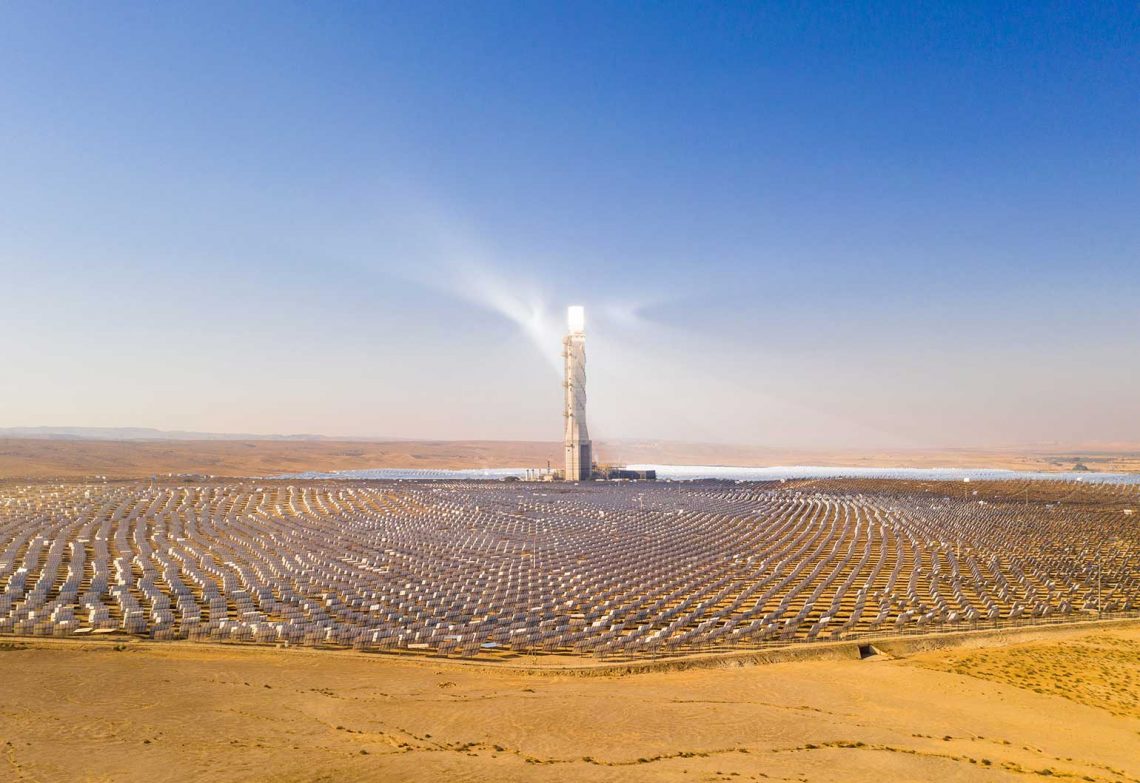In the lead up to UNESCO’s World Engineering Day for Sustainable Development (4 March), create is presenting a series of discussions with experts, revealing the evidence — including major innovations and projects, challenges and solutions, opportunities and risks — that proves engineers in Australia are leading the way to a better future.
Don’t miss Engineers Australia’s free World Engineering Day webinar at 12.00 pm AEDT on Friday, 4 March.
Concentrated solar thermal (CST) power has not taken off in Australia.

This might be explained by the fact that CST plants are major projects. They have a potential construction cost of several hundreds of millions of dollars.
Then there’s the fact that in Australia, CST is relatively unknown and untested.
Dr Stuart Bell, a lecturer at QUT’s Faculty of Engineering and a researcher with the Australian Solar Thermal Research Institute (ASTRI), is part of a group of academics, engineers and scientists from a consortium of leading universities and research institutions working to develop and demonstrate the technology.
Why would energy companies choose CST over the more traditional photovoltaic solar? It’s not that one is better than the other, Bell said. Instead, it’s that they each have different strengths and weaknesses.
“The main advantage of thermal solar is storage,” he said. “There’s the ability to store thermal power as heat during the day and use that energy comparatively cheaply, rather than requiring batteries, in the night.”

Then there’s the fact that CST plants don’t require connection to the national grid. In a country as vast as Australia, this could offer exciting solutions in remote population centres.
Bell is investigating materials that improve storage efficiencies. Traditionally, thermal energy is stored as heat in molten salts.
More recently, he has also begun looking into the degradation challenges of future CST plants. The plant infrastructure must be capable of coping with enormous temperature fluctuations, including increasingly high temperatures, as CST technology improves. Thermal ageing and damage of mechanisms such as pipes and machinery is being researched.
The problem is being investigated from both a material failure point of view (how long will a particular type of weld last?) and a performance and efficiency point of view (how can the system be engineered to be more efficient?).
“Inherent in CST operations is a thermal cycle,” Bell said.
“It heats up during the day then cools down at night as the system uses that heat. That happens every day over thousands of days. As an engineering challenge, the effects of that thermal cycle are not well understood.”




Interesting article – it would be more balanced to ask what happened to the project at Port Augusta, The Solar Reserve Project in Nevada and the recent complexity of the Morocco projects funded by the EU would give a useful global context. Solar thermal plants may well have a place in our taxonomy – but the older generation were more robust and had better economics. Molten salt technology is improving but is equally applicable to nuclear power.
Agree.
I think we are reinventing the wheel. As a student in the 1960-70’s I already heard about the solar furnace at Odeillo in the French Pyrenees-Orientales which can reach temperatures up to 3,500°C.
We should be looking at existing technology and how to improve on it.
This article fails to mention that Australia was a World Leader in CST technology in the 1970’s, and that the Worlds first commercial CST Power Station was built in White Cliffs NSW. That station has been placqued with a Heritage Engineering Marker by Engineers Australia, and tours are available to visitors. You can support the ongoing interpretation of the site by joining the “The White Cliffs Solar Thermal Power Station Friends Inc”.
The idea of thermal solar power is not new in Australia. In 1982 I completed research at UTS (then NSWIT) using a small concentrating parabolic tracking collector, and although I have not seen it, I am advised that CSIRO are still continuing their investigations into these devices. From my recollection, the real problem for large generation ‘heat farms’ rests with the value of land, considering that for industrial applications of thermal solar power, large areas are needed for the ‘heat farms’ near the industrial complex users of heat energy.
Transferring heat energy with fluids over long distances can be very expensive, (and marginally efficient), It was always disappointing to me that the ‘thermal stack technique’ of generation (both thermal and electric) again proved to be uneconomic.
Another barrier is the air pollution created near large industrial complexes, where the ‘heat farms’ should ideally be located, when particulate materials settle on the collector surfaces reducing the transmission of energy, and increase the turbidity of the atmosphere. The costs of keeping collector surfaces ‘clean’ is another hidden cost.
i have visited the CSP site near Seville. impressive site. many factors to be accounted for though, large areas, heat and radiation effects. would ideally be located in the upper atmosphere. athol love